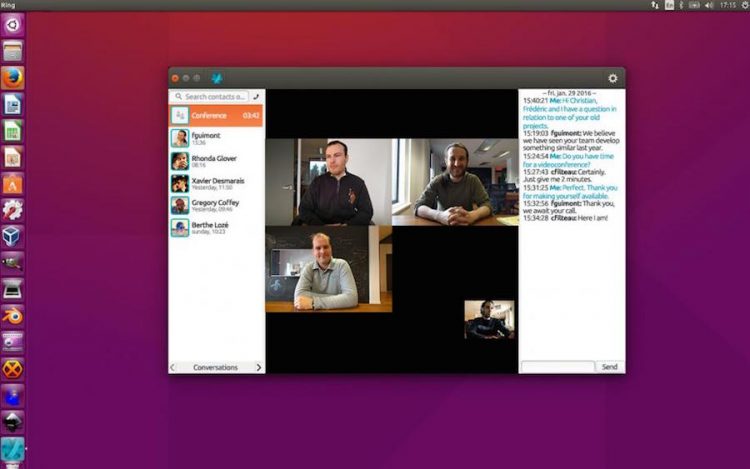If you’re sick of Skype for Linux’s lack of progress, or rankled by the imminent retirement of the older (but superior) Qt Skype client, there’s a GNU alternative in town called Ring.
GNU Ring is a cross-platform, privacy-minded communication app that is fast gaining a following in FOSS and security-conscious circles.
Like an open-source alternative to Skype sans the baggage that Microsoft’s VoIP client comes saddled with, Ring is not only able to do most of what Skype can do, but does it in a secure, reassuringly private way:
- Voice calls
- Conference calls
- Video calls
- Instant messaging
All of these features work across devices, too. It doesn’t matter if your mates are using Ring for Windows, or Ring for Android. So long as they’re on Ring you can, well, ring ’em!
Ring works over a distributed peer network. This means it doesn’t rely on one big centralized server that stores all your details, call history and account info. Instead, the service uses distributed hash tables to establish communication.
The Ring website touts end-to-end encryption with authentification (sic), manages identity with X.509 certificates, and is based on RSA/AES/DTLS/SRTP technologies
Download Ring for Linux
You can download Ring for Linux from the project website or follow along with the installation instructions listed to add the official Ring repo on Ubuntu. There are two versions of the client available: a KDE version and a GNOME version.
If you’re running Ubuntu with Unity, or GNOME Shell, then opt for the GNOME version.
If you’re at all confused about installing it there’s a step-by-step tutorial on the project website.
The official website also has handy links to apps for Windows, macOS, and Android.
Getting Set Up with Ring on Ubuntu
Once you have installed the Ring Linux client you’re almost good to go: you just to get set up with a Ring ID before you can make or take calls.
Getting set up with Ring is different to Skype, Telegram and WhatsApp do it. You’re not tied to a specific mobile number or an email address.
Instead, Ring will ask you to enter a username (you can enter anything) and then assigned you a lengthy identification number. It’s this identification number you will need to send to other Ring users so they can call you.
To make your first call with Ring you need to enter a contact’s Ring ID in the search bar of the main app, then click on the phone icon button to trigger the call.
Everything else should be relatively straightforward. You can install Ring on other devices and authenticate them with your account so that you never miss a call (if you install it on Android you can scan a Qr code for faster set-up).
Details and configurations for Ring are stored in the ‘dring.yml’ file stashed in your home folder’s config directory.
How Well Does Ring Work?
The “sucky” part of this post is telling you how well Ring works: I don’t know because I don’t know anyone else who uses Ring. As such I haven’t had a chance to actually use it.
I did try to Google for Ring reviews but this was a nightmare because the app name is so ubiquitous (I am now very well informed about the Ring video doorbell, though).
If you already use Ring, or you’re able to persuade at least one person you know to try it out, do come back to share a word or two about the connection quality and performance.

